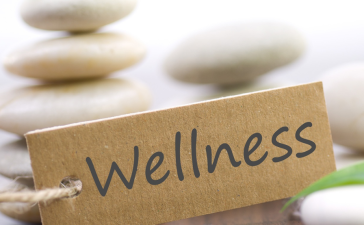In today’s fast-paced world, the concept of wellness has evolved far beyond just eating right and exercising. It now encompasses a comprehensive, holistic approach to health—one that balances the mind, body, and spirit. Wellness is about creating a lifestyle that not only prevents illness but also promotes a higher quality of life. As more people seek sustainable ways to improve their well-being, understanding and practicing wellness has never been more important.
In this article, we’ll explore what wellness really means, why it matters, and how you can integrate practical wellness habits into your daily routine.
What is Wellness?
Wellness is the active pursuit of activities, choices, and lifestyles that lead to a state of holistic health. It’s a dynamic process that involves becoming aware of and making conscious decisions toward a more balanced and fulfilling life. Wellness is not a one-size-fits-all goal but a continuous journey that touches every aspect of human existence.
There are eight recognized dimensions of wellness:
-
Physical – Nutrition, exercise, sleep, and general health.
-
Emotional – Self-awareness, self-care, and the ability to handle emotions constructively.
-
Intellectual – Mental stimulation and lifelong learning.
-
Social – Healthy relationships and community involvement.
-
Spiritual – Meaning, purpose, and values.
-
Environmental – Living spaces and your relationship with nature.
-
Financial – Managing resources to live within means.
-
Occupational – Job satisfaction and work-life balance.
When these dimensions are aligned, individuals experience a profound sense of well-being and resilience.

Why Wellness Matters
Increased stress, poor diet, sedentary lifestyles, and lack of sleep are contributing to chronic health problems worldwide. According to the World Health Organization, conditions such as heart disease, diabetes, and depression are rising at an alarming rate. While modern medicine can treat these diseases, wellness focuses on prevention and lifestyle changes that can significantly reduce their occurrence.
Benefits of practicing wellness include:
-
Improved mental clarity and mood
-
Lower risk of chronic disease
-
Increased energy and vitality
-
Better sleep quality
-
Enhanced resilience to stress
-
Higher productivity and creativity
-
Greater overall life satisfaction
The Pillars of a Wellness Lifestyle
1. Nourishment Through Nutrition
Food is fuel, and your daily choices directly affect your energy, mood, and long-term health. A wellness-oriented diet emphasizes balance, variety, and moderation.
Tips for eating well:
-
Focus on whole, unprocessed foods: fruits, vegetables, whole grains, lean proteins, and healthy fats.
-
Stay hydrated—drink plenty of water throughout the day.
-
Avoid excessive sugar, sodium, and saturated fats.
-
Practice mindful eating—pay attention to hunger and fullness cues.
Remember, the goal is not perfection, but consistency. Small changes, like switching to whole grain bread or drinking an extra glass of water, add up over time.
2. Move Your Body Regularly
Physical activity doesn’t have to mean hours at the gym. It can be as simple as walking, dancing, or stretching. Movement is essential not just for physical health but also for mental clarity and emotional stability.
Wellness-focused exercise tips:
-
Aim for at least 30 minutes of moderate activity five days a week.
-
Include strength, flexibility, and cardiovascular exercises.
-
Choose activities you enjoy to stay motivated.
-
Take breaks to stretch during long periods of sitting.
Exercise increases endorphins, improves sleep, and helps regulate mood. It’s a natural remedy for stress and fatigue.
3. Prioritize Mental and Emotional Health
Emotional wellness is often overlooked, yet it plays a vital role in overall health. Stress, anxiety, and emotional imbalance can lead to physical symptoms and chronic conditions.
Ways to support mental wellness:
-
Practice mindfulness or meditation daily.
-
Keep a journal to process emotions.
-
Seek professional help when needed.
-
Set healthy boundaries and learn to say “no.”
-
Stay connected with supportive friends or family.
Taking care of your mind is not a luxury—it’s a necessity. Prioritizing your emotional health can change your perspective and improve your relationships.
4. Sleep: The Silent Superpower
Quality sleep is foundational for all areas of wellness. It regulates hormones, repairs tissues, and refreshes your mind.
Sleep hygiene practices:
-
Stick to a consistent sleep schedule—even on weekends.
-
Avoid screens an hour before bed.
-
Keep your bedroom cool, quiet, and dark.
-
Avoid caffeine and heavy meals before bedtime.
Adults should aim for 7–9 hours of sleep per night. Sleep debt can’t be fully repaid, so prioritize it like any other health habit.
5. Build Strong Relationships
Humans are social beings. Meaningful relationships provide emotional support, a sense of belonging, and even protection against health problems like heart disease and depression.
Tips for social wellness:
-
Spend time with people who uplift and support you.
-
Engage in face-to-face conversations when possible.
-
Be a good listener and offer empathy.
-
Join clubs, volunteer, or participate in community events.
Even short, positive interactions can have long-lasting benefits on your emotional health.
6. Find Purpose and Practice Gratitude
Spiritual wellness involves connecting with your values and purpose. It’s not always religious—it’s about meaning, direction, and inner peace.
Ideas to enhance spiritual health:
-
Reflect through journaling or meditation.
-
Spend time in nature or quiet places.
-
Volunteer or contribute to causes you care about.
-
Practice gratitude daily—write down three things you’re thankful for.
Purpose provides motivation and helps you navigate challenges with resilience.
Bringing It All Together
Creating a wellness-centered life doesn’t require drastic overhauls. It’s about making small, meaningful changes that build up over time. Wellness is a choice you make every day, in every moment. Start where you are—with what you can control.

Practical steps:
-
Replace one processed snack with fruit or nuts.
-
Take a 10-minute walk during your lunch break.
-
Turn off devices an hour before bedtime.
-
Try five minutes of deep breathing in the morning.
-
Call a friend instead of texting.
Each step you take is an investment in your long-term well-being.
Conclusion
Wellness is not a destination—it’s a lifelong journey of self-awareness, intention, and daily practice. It empowers you to take control of your life, make healthier choices, and live more fully. While health issues may still arise, a wellness mindset gives you the tools to respond with strength, confidence, and clarity.
When you choose wellness, you’re choosing to thrive—not just survive. Embrace this journey, and your life will be richer in every way.





